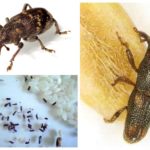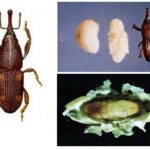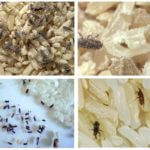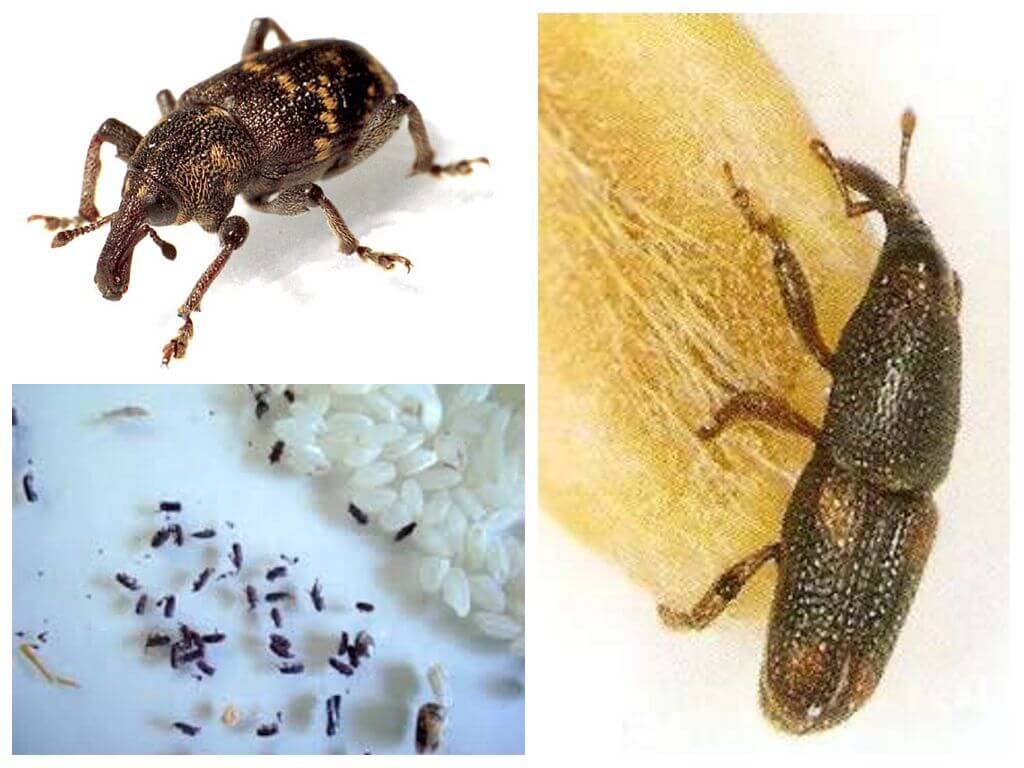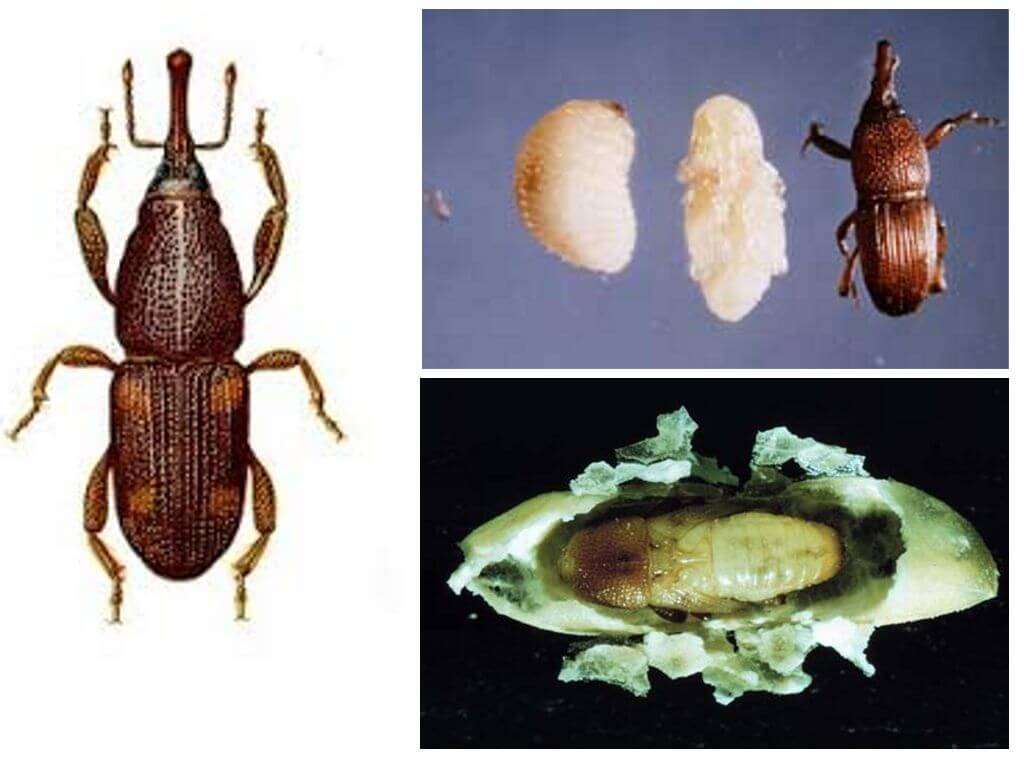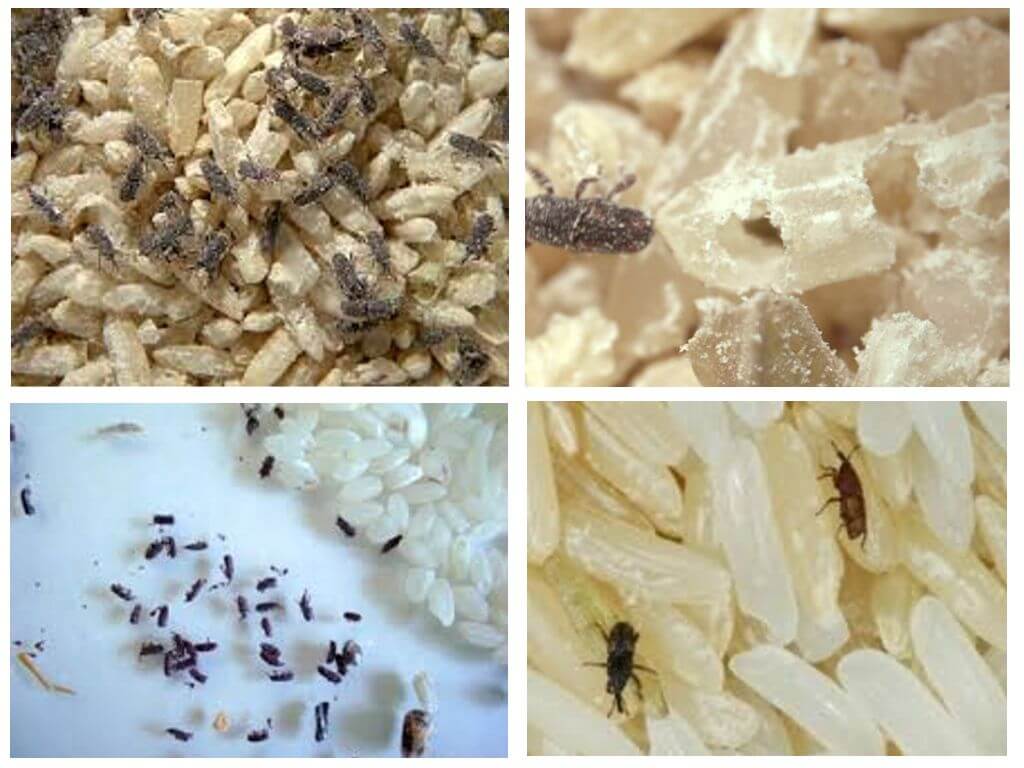Rice weevil - a malicious pest of cereals
- Rice weevil
- Rice weevil larvae
- Rice weevil
Weevils, despite its pretty name, cause serious harm to crops. In total, there are about 50,000 species and it is sometimes difficult for an inexperienced inhabitant to identify each of them. A separate place in the family is a rice weevil. Its historical homeland is India, from where it spread throughout the world.In some countries, the pest is a quarantine object.
Rice weevil description
The pest got its name is not quite justified. In describing the specimen, the naturalist Karl Linnaeus discovered a weevil in rice, which predetermined the species of the insect. In fact, the diet of the beetle is not limited to rice - it does not hesitate to buckwheat, wheat, barley and other cereals, and it may well be found in the listed products.
Characteristic features of the beetle:
- The rice weevil in the photo is distinguished by an elegant rostrum and distinct red spots on the sheaths.
- The size of adults does not exceed 2.5-3 mm.
- Body color is changeable and can be from dark brown to brown. The entire back is densely covered with dots that create a peculiar pattern.
- The rice weevil has well developed wings, so it exhibits exceptional flying abilities.
- The rostrum is equipped with a powerful oral apparatus that allows you to gnaw through the shell of the grain.
The beetle is thermophilic, as a result of which its greatest distribution is observed in the southern regions.The optimum development temperatures are 26-30 ° C and the moisture content of the grains is from 15%.
Interesting!
The rice weevil has much in common with granary weevil. You can distinguish them only by drawing on the back. Also rice pest is characterized by higher fecundity and harmfulness.
In field conditions, insects winter in underground tunnels, rodent holes, under a mound of grain. In the presence of constant food supply are sedentary. When food stocks dry up, rice weevils migrate and fly over to the fields with a new crop.
Features of breeding insects
For representatives of the species of rice weevils full transformation is characteristic. The female gnaws a hole in the grain and lays eggs into it. The fecundity of one female is estimated at 300-500 embryos. After laying eggs, the beetle covers the opening with its discharge. Embryo development lasts from 6 to 12 days.
Newborn larvae are distinguished by white color without any pattern. The size of the young is 2.5-3 mm and their development continues in the grain. The larvae eat away all the nutrients and after 20-30 days, when they have gained the necessary mass, go into the pupation stage.Initially, white pupae, at the end of the phase, turn yellow.
Interesting!
If weevils are bred in rice, the croup loses from 30 to 70% of its original weight.
Imago lives no more than 6 months. The full development cycle ranges from 25 to 210 days. The determining factors for generation are humidity and temperature. If the temperature is below 12 ° C, the development of embryos and larvae of rice weevils ceases. For the year develops from 2 to 4 generations.
How to get rid of pests at home
Infection of grain crops occurs in the fields. Improper storage of cereals in warehouses exacerbates the problem and insects with food get into the apartment. Most often weevils are infused in rice, buckwheat, wheat groats, pasta, bakery products, legumes, flour, and dried fruit. Rice weevils easily gnaw holes in plastic bags and penetrate all available products.
Algorithm of actions how to get rid of rice weevil in the kitchenIt comes down to the following:
- Detection of sources and foci of infection. To do this, you should carefully examine all the cereals, flour, pasta in order to identify the larvae, adults. Contaminated products should be disposed of immediately.
- If there are suspicions that pests have started in the croup, but during visual inspection it was not possible to identify them, to heat the products or to cool them in the refrigerator. Low and high temperatures are detrimental to weevils at all stages of development.
For preventive purposes, a number of activities are carried out:
- processing of products before storage;
- storage of cereals, pasta in containers that are equipped with sealed lids;
- regular inspection of products;
- reduction of strategic food reserves;
- timely disinfection of kitchen utensils.
Among the folk remedies are most often mentioned plants with a deterrent scent. It is proposed to decompose in the lockers branches of lavender, and in containers for the storage of unpeeled garlic cloves.

